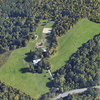High-tech cooling system saves water at Atlas Copco costs village revenues
By Zach Simeone
VOORHEESVILLE As Atlas Copco Comptec saves money and water, the village of Voorheesville is making up for monetary losses.
Two months ago, the village board voted unanimously to raise the water usage rate for the first 25 gallons to $130 minimum, paid in advance. On that same day, a preliminary budget was passed for the 2008-09 fiscal year which showed a $30,000 decrease in revenue from metered water sales.
Trustee David Cardona told The Enterprise why.
“Atlas Copco is recycling their water now,” Cardona said, “which is wonderful on the one hand, but it hurts our revenues because they are not buying as much water from us.” He said revenues were dropping “drastically,” and that it’s “Voorheesville’s biggest issue right now.”
“It’s just that they’re our largest customer,” said Mayor Robert Conway, “so that revenue needed to be made up somehow.”
Since Atlas Copco Comptec built its recirculating cooling tower system in late 2006, it has reduced its annual water usage by more than 90 percent. The building process began nearly four years ago.
A bit of history
The international company builds industrial compressors. According to Robert Matthews, quality assurance manager for Atlas Copco Comptec in Voorheesville, a compressor is essentially a piece of machinery that is used to boost the pressure of a gas, usually air.
“On a smaller scale, people might use that pressurized air to inflate tires,” Matthews said. “A large industrial compressor can produce a lot more compressed air for use in factories and so forth. Some applications include air separation, power generation, chemical and petrochemical plants, wastewater treatment, and many more. They really have all kinds of uses.”
At two meetings in November and December of 2004, representatives of Atlas Copco Comptec talked with Mayor Conway, Commissioner of Public Works William Smith, and Lamont Engineers about concerns of water overuse as onsite production was on the rise.
“We can use water faster than they can even pump it out of the ground,” said Matthews. The amount of water used to test these compressors, he said, “varies so much because of the differences in sizes of the machines and the kinds of testing required. There are fairly short mechanical tests, which take only a couple hours, and complicated performance tests, which can take many, many hours.”
So, in early 2006, construction began on the new recirculating cooling tower system, a project that would cost the company $673,000. Construction was completed in July of 2006, and the system was fully operational by September of that year.
It was later estimated that, based on rates from 2005 and the increase in production, Atlas Copco would have used more than 20 million gallons of water in 2007 were it not for the new system.
But with the recirculating cooling tower, actual water use for 2007 ended up at 2 million gallons a more-than-90-percent decrease from the original estimated amount. In addition, the company estimated that it saved $100,000 thanks to use of the cooling tower. “But it was never a cost-reduction project,” said Matthews. “The focus was regulatory compliance, and water conservation.”
Here’s how it works
The compressor-building process involves much testing. This testing generates massive amounts of heat, so water is used to cool the compressed air down as the compressors are tested.
Atlas Copco’s New York State Wastewater discharge permit states that its water can be no hotter than 90 degrees Fahrenheit at the location where it is discharged in this case, the Black Creek Marsh behind its facility on Schoolhouse Road. Before the cooling tower was installed, additional village water had to be added to the heated testing water to cool it below 90 degrees.
Here’s how the new system works. There is a 16,000-gallon, underground cooled water tank beneath a small pump house, a stone’s throw away from the testing facility. There, the water is stored until it is needed for cooling, when it is pumped into the nearby factory and run through a newly constructed compressor as its performance is tested.
As the water cools the compressed gas being tested, it is heated to about 100 degrees Fahrenheit. The 100-degree water then flows out of the testing facility and into the 2,000 gallon holding tank, just next to the pump house. From there, the water is pumped into the recently installed, evaporative cooling towers, which is essentially the main event here.
The water is sprayed down from the top of the tower onto several layers of vertically arranged sheets, or baffles, which appear as a practical labyrinth of tiny, metallic honeycombs. As the water trickles down these sheets, a large fan blows cool air on the water, which causes cooling by evaporation.
“The same way that you’re cooled when you sweat,” Matthews said, “when liquid is evaporated, it takes heat away. It’s trickling down, there’s a fan forcing air over it, and the baffles provide a large surface area.”
The tower cools the water from 100 to 85 degrees, after which it travels back to the large storage tank beneath the pump house, where it started.
“A triple win”
“This is something we’d been trying to get going for years beforehand,” said Jim Ryan, facilities team leader at Atlas Copco Comptec in Voorheesville.
Matthews called the cooling tower system “a triple win better for the environment, cost benefits for Atlas Copco, and supply benefits for the village,” he said. “The only real loss is revenue for the village.”
“They’re doing a great job conserving their water, and it’s accelerated a bit,” Mayor Conway told The Enterprise. “So, we’re trying this other avenue to recoup that money. I think we were able to adjust the water rate without hurting anyone too badly.”

